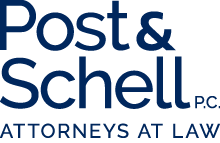

Time for Hospitality Employers to Prepare for Affordable Care Act Obligations

Now that the enrollment period has passed for individuals to sign up for the Affordable Care Act (ACA), attention will now turn to the obligation of large employers, like those in the hospitality industry, to offer affordable health care to its full-time workers. Recently the U.S. Department of Health & Human Services (HHS) issued regulations that changed the timing and nature of employer obligations under the ACA, however, the core obligations have not changed.
As a general rule, applicable large employers (ALE) are required to offer their full-time employees (and their dependents but not a spouse) a health care plan with minimally credible coverage that is affordable, or be assessed a shared responsibility payment (pay or play) to the federal government. While the general rule is easy to state, understanding and applying the rule is very difficult and will require the collaboration of a multidisciplinary team of tax, benefits, health care, and employment attorneys, as well as benefits brokers and consultants to sort through an employer’s obligation. Even though the statute itself is over 2,000 pages long, the crux of the law is found in the regulations issued by three federal agencies, the IRS, HHS and the U.S. Department of Labor (DOL), the size of which far exceeds the word count of the statute.
Employers in the hospitality industry should examine and consider the following:
​1. Are you an Applicable Large Employer (ALE)?
​The first matter to be determined is whether you are an ALE. Under the statute, an ALE is an employer that employees 50 or more full-time equivalent employees. A full-time employee for purposes of the ACA is an employee who regularly works 30 or more hours in a work week, or 130 or more hours in a month. Considering the variable and seasonal nature of hospitality workforces, the workforce size calculation may be difficult. Since full-time employment is defined as 30 hours (1,560 annually), if the total hours worked by your workforce exceeds 78,000 hours (50 x 1560), it is likely that you will be considered an ALE under the ACA. Also, there is no safety for hospitality employers that operate under multiple corporate charters (i.e. common parent, hotel and restaurant different corporations) since the IRS will use its standard multiple related entities rules to find common employer status for ACA coverage purposes.
2. What is minimally credible coverage?
This is one area of the ACA where the regulations are relatively straight forward. The health care plan design must be structured to cover at least 60 percent of the total health care cost that an employee is likely to incur in a year. Using the “metal plan” titles that have become so familiar, these minimum plans are referred to as the “Bronze Plans.” Coverage needs to be offered to eligible full-time employees and their dependents (including children up to age 26), but not spouses. The cost of such coverage cannot exceed 9.5 percent of the employee’s household income. Since an employer will not always know what an employee’s household income is, a safe harbor is offered at 9.5 percent of the employee’s W-2 income with the employer. However, note that the 9.5 percent cap applies only to the employee’s cost, not the cost of dependent coverage. So the total employee premium cost can exceed 9.5 percent of income for individual and dependents costs without violating the ACA. Also note also that the ACA identifies different core elements for grandfathered plans (continually in existence without change since before March 23, 2010) versus new or changed plans.
3. Who are the employees to be offered coverage?
Once it is determined that you are covered by the ACA, the next issue to resolve is to identify the full-time employees who are to be offered coverage to avoid the shared responsibility penalty. For employees who are regularly scheduled to work 30 or more hours per week (or 130 hours per month) this is an easy calculation. They are considered full-time employees for ACA coverage purposes.
What about employees who work variable hours or seasonal positions that go above and below the 30-hour threshold? Here the ACA provides a number of “look-back” measuring periods ranging from six to twelve months to determine if an employee is averaging 30 or more hours per week. This is where the law gets quite complicated. There are four key periods that must be studied:
1. The standard measuring period
2. The initial measuring period for new hires
3. The administrative measuring period
4. The stability period
For current employees, during the standard measuring period the employer looks at employee hours for a fixed period of time and averages the hours to determine if the employee has 30 or more hours in a week (or 130 in a month) during that period. That is the period that is used to identify employees who must be offered coverage. The standard measuring period is followed by an administrative period of no longer than 90 days that is used to communicate with employees and for open enrollment. Finally, the stability period is the timeframe following the administrative period during which the employee must be offered coverage. The stability period must be the greater of six months or the length of the standard measuring period.
For example, if you use a 12-month standard measuring period, the stability period must be 12 months. If, on the other hand, you use a three month standard measuring period, the stability period must be no shorter than six months. Once an employee is identified as a full-time employee under the standard measuring period, he/she must be offered coverage for the length of the stability period irrespective of hours variations that may occur during the stability period.
Consider the following example. An employer has a plan year starting on April 1, 2015. It elects to use a six month standard measuring period followed by a 90-day administrative period. As described the example would look like this:
- Standard Measuring Period: July 1, 2014 to December 31, 2014
- Administrative Period: January 1, 2015 to March 31, 2015
- Stability Period: April 1, 2015 to September 30, 2015
The process becomes a continuous ongoing cycle to identify the employees who must be offered coverage to avoid the penalty. Considering the seasonal and variable nature of most hospitality industry workforces, this process will be burdensome, time consuming and costly.
4. Temporary relief!
Finally some good news. The duty to offer coverage or pay the penalty has been deferred to the start of the 2015 plan year for employers who employ 100 or more employees, and to 2016 for employers with 50-99 full-time employees, provided the small group employer meets a series of rules for transitional relief during that period. In addition, ALE’s can avoid the penalty if they offer coverage to at least 70 percent of their full-time employees in 2015, reverting back to the 95 percent coverage standard in 2016. These changes should be very helpful for employers struggling to understand and meet their 2015 obligations under the ACA.
5. Pay or Play!
What are the penalties and what triggers the payment of a penalty?
The triggering event is an employee going to an exchange and qualifying for a subsidy. There are two types of penalties:
1. The no-coverage penalty that applies to employers who do not offer any coverage at all or who offer minimum affordable coverage to less than 70 percent of its full-time employees in 2015 (95 percent in 2016), and at least one employee is certified to receive a subsidy in an exchange. This penalty can be very significant: $2,000 x the number of full-time employees in excess of 80 in 2015, reverting back to 30 in 2016. So if you have 250 full-time employees and you trigger this penalty in 2015, the penalty would be $340,000 for 2015 (250 – 80 = 170 x. $2,000 = $340,000). For 2016 it would be even higher since the employee deductible falls to 30.
2. On the other hand if an employer offers coverage to at least 70% of its full-time employees in 2015 (95 percent in 2016), but the coverage is unaffordable or does not meet minimum coverage requirements, and at least one full-time employee is certified to receive a subsidy in an exchange, then the unaffordable/inadequate coverage penalty kicks in, which is the lesser of the no coverage penalty or $3,000 times the number of employees who receive assistance through the exchange. In most cases the unaffordable/inadequate coverage penalty will be much less.
6. Action Items
So what should a hospitality employer be doing right now?
1. Determine if you are a covered employer under the ACA
2. If you are covered, you need to decide whether you are going to offer an affordable healthcare plan to your employees or whether you are going to pay the penalty. If you decide to offer a plan, you need to work with your benefits broker, insurer, or third-party administrator to be sure that the plan satisfies the minimum coverage requirements and is affordable.
3. Either way, in order to understand who must be offered coverage, and to quantify potential costs to either “pay or play,” you need to calculate and identify your full-time employees. If you have a seasonal or variable workforce this will require you to establish a standard measuring period, an initial measuring period for new hires and an administrative period so you can define your cost for the stability period.
4. If you have more than 100 full-time employees and you are on a calendar plan year, your obligations to “pay or play” begin on January 1, 2015. If you have a non-calendar year plan, your obligations start with the first day of your plan year in 2015. If you are a small group employer employing between 55-99 employees, you have one more year to sit on the sidelines.
This review is intended to assist employers in the hospitality industry in identifying the near-term steps steps to deal with ACA issues. However, it important to note that this is a summary of the law and does not begin to address the numerous requirements and nuances found in the ACA. Before you act, we recommend that you engage the services of your accountant, benefits consultants, benefits counsel, and tax counsel to help map your way.
_________________________________________
If Post & Schell and the Firm's Hospitality Practice Group can be of assistance in helping to define and narrow the issues that you face, please do not hesitate to contact us. Learn More >>

